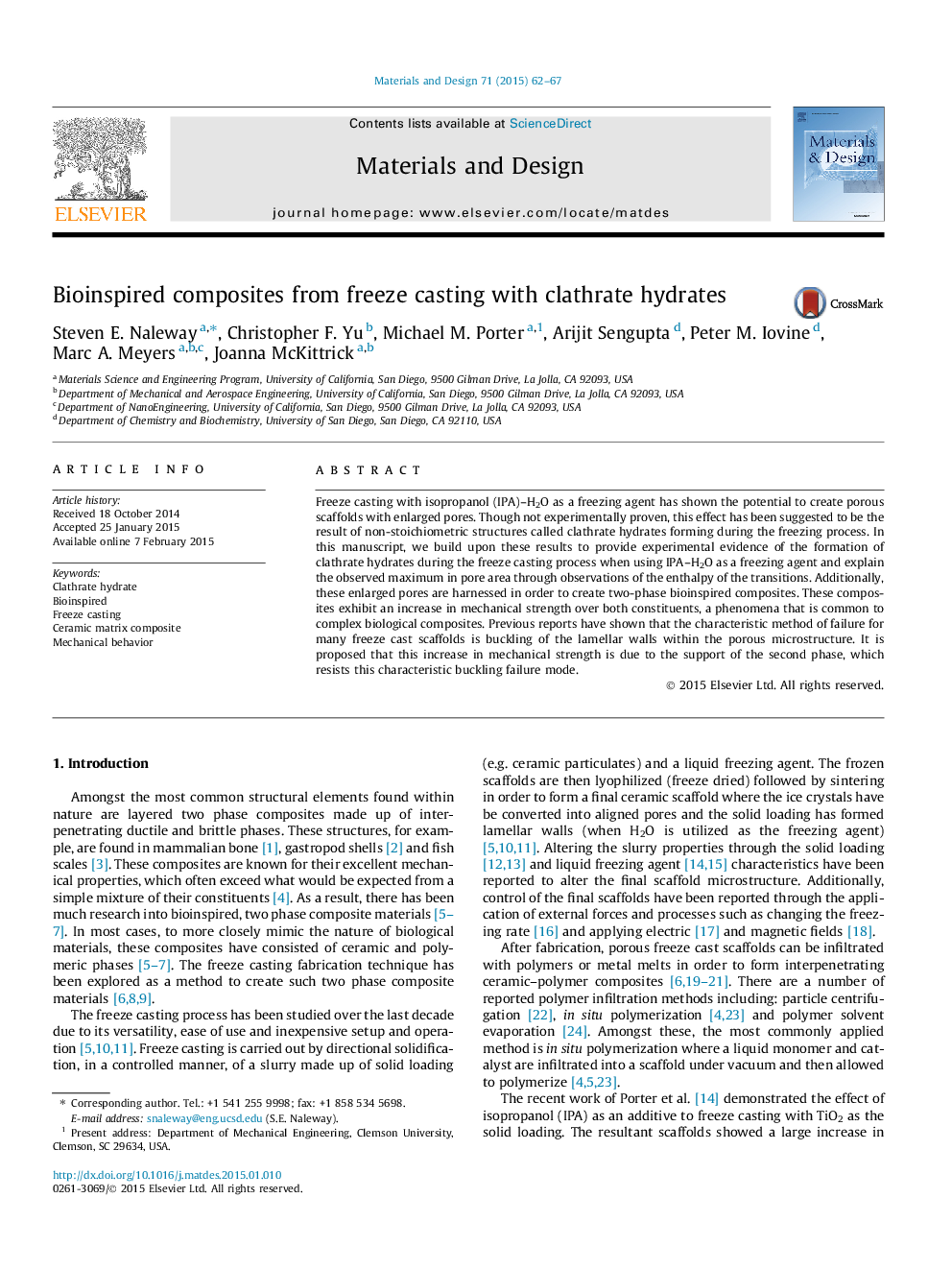| Article ID | Journal | Published Year | Pages | File Type |
|---|---|---|---|---|
| 828669 | Materials & Design (1980-2015) | 2015 | 6 Pages |
•Freeze casting with IPA–H2O shows a maximum value at 5–7 vol.% IPA.•Differential scanning calorimetry shows IPA induces clathrate hydrate in IPA–H2O.•Enthalpy measurements suggest the maximum pore area is caused by saturation of IPA.•Composite mech. properties higher than constituents similar to biological materials.
Freeze casting with isopropanol (IPA)–H2O as a freezing agent has shown the potential to create porous scaffolds with enlarged pores. Though not experimentally proven, this effect has been suggested to be the result of non-stoichiometric structures called clathrate hydrates forming during the freezing process. In this manuscript, we build upon these results to provide experimental evidence of the formation of clathrate hydrates during the freeze casting process when using IPA–H2O as a freezing agent and explain the observed maximum in pore area through observations of the enthalpy of the transitions. Additionally, these enlarged pores are harnessed in order to create two-phase bioinspired composites. These composites exhibit an increase in mechanical strength over both constituents, a phenomena that is common to complex biological composites. Previous reports have shown that the characteristic method of failure for many freeze cast scaffolds is buckling of the lamellar walls within the porous microstructure. It is proposed that this increase in mechanical strength is due to the support of the second phase, which resists this characteristic buckling failure mode.
Graphical abstractFigure optionsDownload full-size imageDownload as PowerPoint slide
